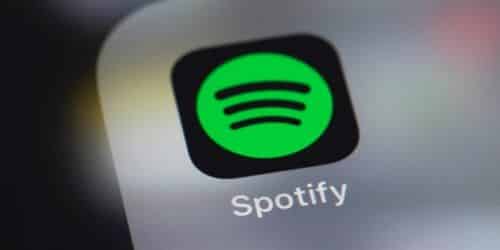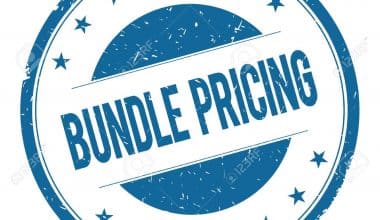Spotify is undoubtedly the largest music streaming service in the world. You can either pay for Spotify with a premium subscription or can’t. There is a Student Plan in which you pay less, a Family Plan in which someone else pays, and a free option in which you stream with commercial breaks between your songs.
How do Spotify and the musicians on the site make money if so many users stream for free on the platform? Read to learn how Spotify makes money
What is Spotify, and How Does it Work?
Spotify is a music and media streaming service that offers over 70 million songs and 2.9 million podcasts.
Spotify operates as follows: When people create an account, they can select between a free and premium plan. Users can then listen to music and podcasts and create and follow playlists, depending on their chosen subscription.
Spotify, which was founded in 2006 in Stockholm, Sweden, by Daniel Ek and Martin Lorentzon, presently has over 365 million monthly active users (MAUs) and over 165 million premium customers.
Apple Music, Pandora, SoundCloud, TIDAL, Audiomack, and other music streaming sites are among Spotify’s competitors.
Spotify’s Business Model
So far, we’ve learned about Spotify’s origins and how it operates. Let’s now dissect the critical components of Spotify’s business model. Spotify’s business model is focused on creating a two-sided music marketplace for users and artists backed by data, analytics, and software.
#1. Value Proposition
- Users: Spotify guides users through our millions of music and serves as a portal to a world of accessible, dynamic, and entertaining material. Spotify offers various listening alternatives that address users’ current moods and activities, capturing a unique insight into the moments in their lives. Spotify offers Cross-Platform Flexibility to its users. This adaptability allows customers to access Spotify using a single user ID across mobile, tablet, and other connected devices, resulting in a seamless and integrated experience tailored to different lifestyles. Spotify had 406 million monthly active users in 184 countries as of December 21.
- Creators: Spotify gives creators and artists a big platform to connect with existing fans and get discovered by new fans. Furthermore, Spotify offers musicians a whole suite of tools and services, allowing them to expand their businesses on a single platform.
Spotify allows creators to monetize their work by paying royalties. Since its inception, Spotify has paid more than €26 billion in royalties to record labels, music publishers, and other rights holders.
Lorde, an international pop phenomenon, is one noteworthy example of how Spotify helped an aspiring musician to reach a global audience. Lorde began as a New Zealand singer-songwriter hoping to break out with her new tune, “Royals,” until Sean Parker added it to his popular playlist Hipster International. After about a month, Lorde surpassed well-known musicians such as Katy Perry, Drake, and Lady Gaga to take the #1 spot on Spotify’s Viral Chart. After eight months, she had over 100 million Spotify streams and was number one on the Billboard Hot 100.
#2. Marketing
Spotify’s advertising initially intended to educate the market on the notion of on-demand music streaming and our navigation functionality. As people became more comfortable with the music access concept, its promotional efforts switched to emphasize the personalization and discovery features.
Among its key marketing strategies are:
- Brand Marketing: Spotify frequently places users at the heart of campaigns to demonstrate how people use Spotify’s Service to highlight music’s importance in everything it does and express its distinct and quirky culture.
- Marketing for musicians: Spotify highlights artists and their work through billboards, other conventional media, and digital channels by developing a story that directly ties their music and Spotify’s Service with a community of fans.
- Discounts on Premium Services: Spotify offers promotional campaigns on its subscription service. These promotions, which generally run over the summer and around the holidays, offer a three-month subscription to the Premium Service at a discounted price.
How Does Spotify Make Money?
Spotify generates money by charging a premium for Premium (ad-free membership) and Ad-Supported Services (display, audio, and video advertising delivered through advertising impressions). Spotify made €9.7 billion in 2021. Let’s dissect the different ways Spotify makes money.
#1. Premium Income
Premium subscribers have unlimited online and offline high-quality streaming access to Spotify’s repertoire of music and podcasts. The Premium Service provides a music listening experience free of commercials.
Spotify distributes Premium Services directly to end users and through partners, typically telecommunications providers that bundle the subscription with their services or collect payment from their end customers for stand-alone subscriptions.
180 million of the 406 million monthly active users are premium customers. That’s a staggering 45% ratio. According to TechCrunch, most freemium startups have customer conversion rates ranging from 1% to 10%. (with an average of around 2 percent to 4 percent). Premium will account for 86% of Spotify revenue/money in 2021.
#2. Revenue from Ads
Spotify Ad-Supported business makes money primarily through display, audio, and video advertising provided through advertising impressions.
Spotify enters into agreements with advertising agencies to purchase advertising on its platform on behalf of its clients and with select significant advertisers directly. Ad-supported revenue will account for 14% of Spotify’s revenue in 2021.
How Does Spotify Work?
To understand how Spotify operates, we must dissect many vital parts such as elements, activities, partners, channels for reaching clients, etc.
First, consider how the target audience interacts with the platform and engages in essential activities.
How Do Spotify Users Use It?
Music fans can improve their listening experience by using Spotify. They can make a profile, stream high-quality audio and video content, organize music, share, follow their favorite artists, and personalize the platform.
#1. Set-up a Description
Listeners can install the Spotify app on their devices or join up online via a browser. The first step is to build a profile, and an account can be created using an existing Google, Facebook, or Apple account, as well as a phone number or a separate email address. Users then select their favorites from various artists and genres to design their home feed.
#2. Audio and video content can be streamed.
Users can then listen to high-quality music and audio and video podcasts, with commercials on the free version and no adverts on the premium version. Tracks from over 5000 genres and sub-genres are available to users, ranging from indie rock and hip hop to contemporary and classical. The portal also provides a variety of podcasts with themes such as instructional, thriller, fiction, lifestyle and wellness, news and politics, sports, and so on.
#3. Arrange Music
On Spotify, playlists are the most significant way to organize your music. Users can access both self-curated and custom-made playlists on the platform. Users can create their own playlists by adding their favorite songs and categorizing them by genre in separate playlists. On the other hand, Tailor-made playlists are built by the platform based on the user’s listening behavior. Daily mix, weekly finds, and the time capsule are some of the platform’s unique bespoke playlists selected for its users. Another great feature of Spotify is the ability to create collaborative playlists with friends.
#4. Share Codes
Sharing Spotify codes is another way the platform is redefining the user experience. QR codes on billboards, posters, and brochures can be scanned using device cameras. The codes contain integrated links that instantly lead to the album or music on the platform. These identifiers are also used when friends and relatives want to share music, playlists, and albums.
#5. Follow Favorites
Users can also follow their favorite music bands, artists, and podcasters to receive unique notifications of new releases or trending material. Furthermore, the ‘Find Friends’ function allows users to look for and follow their friends’ accounts, allowing them to broaden their listening horizons.
#6. Personalize
To personalize the experience, the site allows users to customize their home feed by exploring the radio option to make similar songs and artists, listen to a private session, sort the search bar, and so on.
The platform enables users to connect and function across several devices while listening to music in their preferred manner.
Spotify Library is another eye-catching feature. It is a personalized app within the platform, and users can add anything. They can manage their playlists, like songs, followed artists, podcasts, and albums, without having to scroll through the feed looking for topics or music.
How Do Advertisers Make Money On Spotify?
Advertisers may use Spotify’s innovative advertising tools and techniques to increase their reach and exposure. They may create an account on Spotify ad studio, locate their target demographic, develop audio and video advertising, and track their effectiveness.
#1. Set-up an Account
Businesses, corporations, agencies, educational institutions, and others must have a Spotify account to advertise on Spotify.
Advertisers can sign up for a free Spotify account and log in to the Spotify ad studio using their corporate emails or current accounts. Spotify ad studio is a self-service platform that allows advertisers to access Spotify listeners.
Assume the company is based in the United Kingdom, Spain, Australia, New Zealand, or Mexico. In that scenario, Spotify also checks the said business’s VAT or other tax identification numbers to set up its account on ad studio.
#2. Find The Target Audience
Spotify enables advertisers to reach and engage with their listeners across devices, moments, and formats, allowing the message to be delivered in the following ways:
Is suited to the listeners’ interests Is integrated into the listeners’ experience
It is timely and pertinent to the listener.
Advertisers can use the platform’s audience targeting options to filter and sort out relevant listeners. The key options are classified as follows:
- Demographics: It enables advertisers to approach listeners based on who they are or where they belong. The crucial criteria, in this case, are age, gender, and location.
- Device and connectivity: It enables advertisers to reach listeners across several devices and become a part of their daily moments and experiences. Some modes that define customer experiences and their reach are automotive, connected home, platform, mobile/device, Xbox, and so on.
- Listening Behaviours: Through extensive analysis, it enables advertisers to approach listeners depending on their musical tastes. A study of genres, sub-genres, playlists, and podcast categories provides insight into a person’s tastes and aids in directing advertisements.
- Predicted Interests: It enables advertisers to approach listeners based on Spotify’s expertise in predicting users’ close interests. These predictions are based on the user’s activity on the platform and the general behavior of users on the site with similar tastes.
- Off-platform Targeting: It allows advertisers to approach listeners based on their behavior outside the Spotify site. What a listener searches for and spends time on, bespoke audience match, third-party targeting, and so on all help to increase reach.
- Past Interactions: It enables advertisers to approach listeners depending on how they interacted with digital ads on the platform in the past. Brand exposure, sequential messaging, real-time retargeting, and other tactics are employed.
#3. Create a Commercial
Spotify’s free creative services make it simple to create professional audio commercials in minutes. Advertisers can, however, upload pre-prepared files for airing on the platform.
People listen to Spotify in the car, gym, office, and in showers. As a result, the platform provides several ad formats to meet the needs of both listeners and advertisers.
Audio advertising is played between songs to capture listeners’ attention throughout the day.
Video commercials play only when a listener actively browses the Spotify content archive, ensuring that the material is seen and heard.
During the listening session, podcast advertisements communicate the brand’s story. They elicit emotional responses and audience participation.
Multi-Format ads are suited to the demands of the business and assist in increasing reach through multiple ad forms.
Furthermore, the site provides free tools, tips, tricks, best practices, and step-by-step guidance for creating an ad from scratch.
Measure Impact Advertising on Spotify offers the unique benefit of quantifying and displaying an ad’s effectiveness. These figures are similar to measurements that indicate the impact of an advertisement on its target audience.
The measurements are divided into four categories: ad delivery, performance, audience, and streaming conversion metrics. These indicators are derived from examining the adverts delivered, reach, clicks, genres, age, average stream per listener, etc.
Furthermore, Spotify reporting partners give the expertise to measure ad reach, resonance, and reaction, easing the vital aspect of online advertising.
Subsidiaries, Acquisitions, and Exits at Spotify
Spotify Technology S.A. has made 21 acquisitions, 5 investments, 3 lead investments, and 1 successful exit to date.
Spotify Revenue and Profit
Spotify’s revenue in 2020 was $9.24 billion.
Because Spotify Technology S.A. is a publicly traded business, they are required by the Securities Exchange Act of 1934 to file continuous financial files with the United States Securities and Exchange Commission (SEC). Spotify’s publicly available financial records, including annual reports, may be found on its website under the investor section.
What is the business and income model of Spotify?
Spotify makes money by combining a few revenue models. These are:
- A business model based on freemium (upselling)
- The business model based on subscriptions
- The business model for advertising
- Business model B2B2C (partnerships)
- A business model based on mergers and acquisitions (M&A).
Spotify’s Finance, Net Worth, and Market Capitalization
Spotify has received $2.1 billion in 18 rounds, according to Crunchbase, and has a market valuation of $201.18 billion as of September 2022.
Conclusion
Spotify is currently the dominant player in the internet music streaming sector. However, rising players have significantly lowered market share, with Apple Music posing the most significant threat.
Nonetheless, Spotify purchased Mediachain Labs to supplement its licensing expenditures. The blockchain firm will use blockchain technology to address the payment of royalties to artists and improve Spotify’s operations by decreasing costs.
Furthermore, Spotify features good streaming quality, fashionable content, a diverse repertoire, flexible connectivity and sharing options, a diverse music and podcast catalog, and various ad styles. As a result, the platform has significant growth opportunities in the Music Streaming area in the following years, where the number of users is predicted to reach 913.2 million by 2025.
- APPLE MUSIC LOGO: History, Evolution & All You Should Know
- How To Monetize A Podcast on Spotify & Other Platforms In 2022
- Music Business: All you need to know
- THE BEST 2022 BUSINESS MUSIC SYSTEMS (Updated)
- RADIO ADVERTISING: Costs, Types, Advantages & Disadvantages (All You Need)






